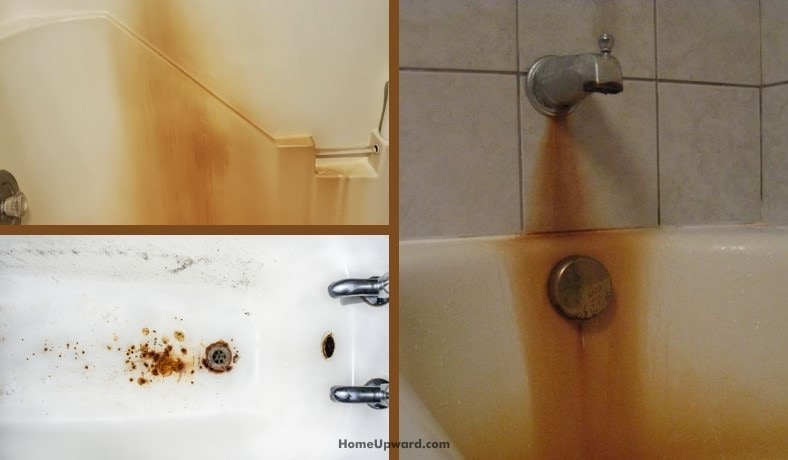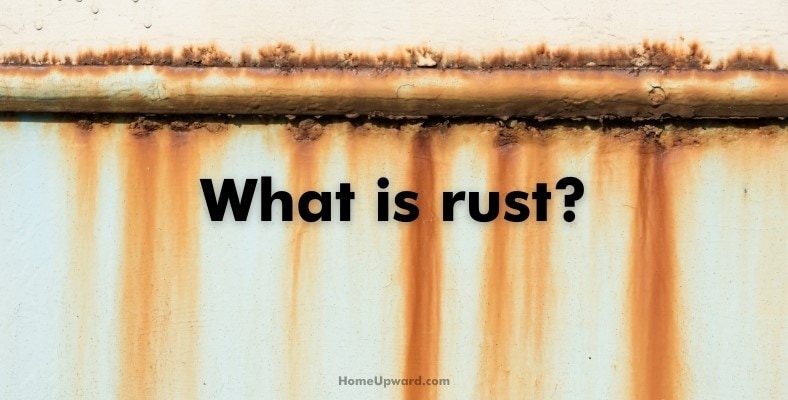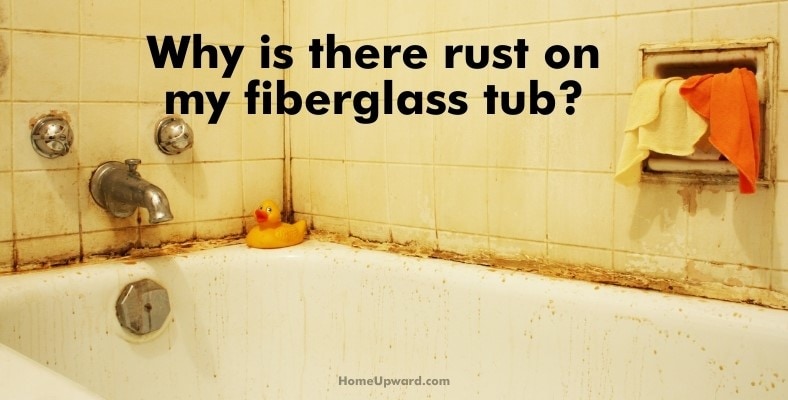If you’re lucky enough to own a bathtub, then you will know just how important it is to keep it clean. When you bathe in a tub your body can release all sorts of oils, dirt, and grime into the water, making it dirty and it can stain the tub.
Here you’ll learn bout fiberglass tubs, how you can remove stains from them, as well as what you can do to prevent stains from appearing in the future. Read on to learn more!
Contents
Fiberglass tubs and things to know
Fiberglass is a material that is made from reinforced plastic. This reinforced plastic is then molded and formed into the shape of a bathtub. This is then reinforced some more by a layer or gel coat resin, which will protect it from scratches and minor impacts.
Of all the possible materials a bathtub can be made of, fiberglass is by far the cheapest and lightest in weight overall. It gives more flexibility to install due to the material being relatively low in cost.
This flexible design does come at a cost though, fiberglass is the least durable material on the market for bathtubs, and its porous quality leaves it having poor heat retention as well as a pretty brittle resistance when it comes to heavy impacts, and down the road, it can even start to warp.
Having a fiberglass tub is good because it is affordable, lightweight, and flexible in design. But, they are not durable, they absorb moisture, and they do lack aesthetically pleasing qualities, so they look rather dull as well.
What is rust?
Why do we get rust in our bathrooms? That is a question that needs answering because if we do not know the cause, we cannot prevent it from coming back. Rust is formed when dissolved iron particles mix with oxygen found in water. Iron is not naturally in the chemical makeup of water, however, it is commonly found in rivers, leaked, and other places where we source our water from.
As this dissolved iron sits it builds up over time, and it can start to clog pipes, and leaves behind a nasty residue. It will often leave behind rust and water stains. There can also be rust in the pipes in your home, which can then stain whatever it touches and can leave the water with an orange/ brown tint when it comes out of the faucet.
While you can remove these stains when you notice them, until the problem is found and resolved at the source, the stains will continue to reappear.
Why is there rust on my fiberglass tub?
As we said, rust stains are caused by the presence of dissolved iron in the water used in your home. This iron oxidizes and collects on the surface of bathtubs and sinks, and it will create that unpleasant orange colored stain.
Cleansers such as bleach will only worsen the problem. Bleach chemically reacts with iron in the water, and it will just create more rust in the bathtub.
Fiberglass is also one of the least durable bathtub materials, so stains on fiberglass will definitely be harder to combat and more likely to be prominent than in more durable materials. Not to say that other materials do not suffer too. Fiberglass is just the weakest material for bathtubs, but it is also the cheapest.
Removing rust from a fiberglass tub
The thought of cleaning our bathtubs does not conjure up fun images, the thought alone is painstaking and feels like a lot of effort, however, if you know what you are doing and have a clear vision of what to do, it doesn’t need to be hard, back-breaking work.
So many homes will have fiberglass tubs simply because they are the lightest and most affordable on the market. But how do you clean them when the rust stains start to appear?
If your fiberglass tub is tormented by rust stains, you need to clean it, if the stains are old and set in, you can still get rid of them with the right techniques. You can use salt and lemon, baking soda, white vinegar, or even a borax mixture. All mixed in with some elbow grease, determination, and a keen eye for cleanliness.
Here are some ideas that will help you to remove those pesky rust stains and have a bathtub that looks as good as you want to feel after taking a bath.
Lemon and Salt
Fiberglass tubs are great, especially if you need a tub on a budget, on the downside they will get rust stains easier than you might like. But, you don’t need to counter your savings from getting a fiberglass tub by spending tonnes of cash to clean your bath. Look in your kitchen, and you will have what you need already.
Lemon and salt are a cleaners’ old faithful. They both have stellar cleaning properties, even for the most stubborn stains. It is super easy to use and clean with.
Simply:
- Grab a bottle of lemon juice, or lemon and some salt.
- Rill the lemon along a counter to release the juices, then cut it in half and squeeze the juice into a bowl.
- Soak a clean cloth of sponge into the lemon juice and dab the affected area with it.
- Now, place a fair amount of salt onto the affected area and make sure all stains are coated with it.
- Let this sit for a good three or four hours, and it will remove the stains on your tub.
- After the time has passed, gently scrub the stains with a microfiber towel, and then rinse with plain water and allow it to dry.
Baking Soda
You may have heard some baking soda hacks before, this is a genius thing to use for cleaning. It doesn’t just remove stubborn stains, it also deodorizes too! Using baking soda will kill the stains and any odor that may otherwise linger from them.
To do this:
- Get some baking soda and a microfiber cloth.
- Create a paste with the baking soda, using one part baking soda, one part water. Keep in mind the number of stains, and their size when you do this. Try to create an adequate amount, if not you can always make more.
- Smear the paste on the stained area, covering all the stains for better results.
- Now, let the pasta sit on the tub overnight and do not interrupt this. You want to refrain from using your tub for a while to get the best results.
- In the morning, use a microfiber cloth to remove the paste, and rinse off the residue. There should be no stains, however, if some have lingered you can always repeat. For extra stubborn stains, add in a little salt to the paste for more de-staining power.
Vinegar and Borax
This mixture may seem curious, however, they prevent any loss of shine. They will soften the minerals in the stains and prevent the glass surface from becoming scratched.
- Craft a paste using one part borax and one part distilled white vinegar.
- Place the paste on the stains and use a toothbrush to scrub the stained area.
- Leave this paste to sit for a while, but do not let it dry or become powdery. If it does, spray some vinegar on there.
- After a few minutes, rinse it off with water. If there are any stains remaining, spray on some vinegar and use a toothbrush to scrub some more.
- If vinegar isn’t an option for you, hydrogen peroxide is a good substitute.
Prevention
While some factors in our water may not make it easy to prevent stains, we can do things to prevent them from forming, or from forming as much.
One of the things that you can do is to wipe down your tub with a towel after you bathe or shower. If you have hard water, this will stop rust or soap scum build-ups from occurring.
When cleaning, always rinse off chemicals well, and when you clean avoid abrasive steel wool or anything else abrasive as you may scratch the fiberglass and its finish.
Do not forget to always wear adequate protective equipment when you clean using chemicals in the bathroom. Wear gloves, and old clothes to prevent damage to yourself. Safety is a priority above all.






